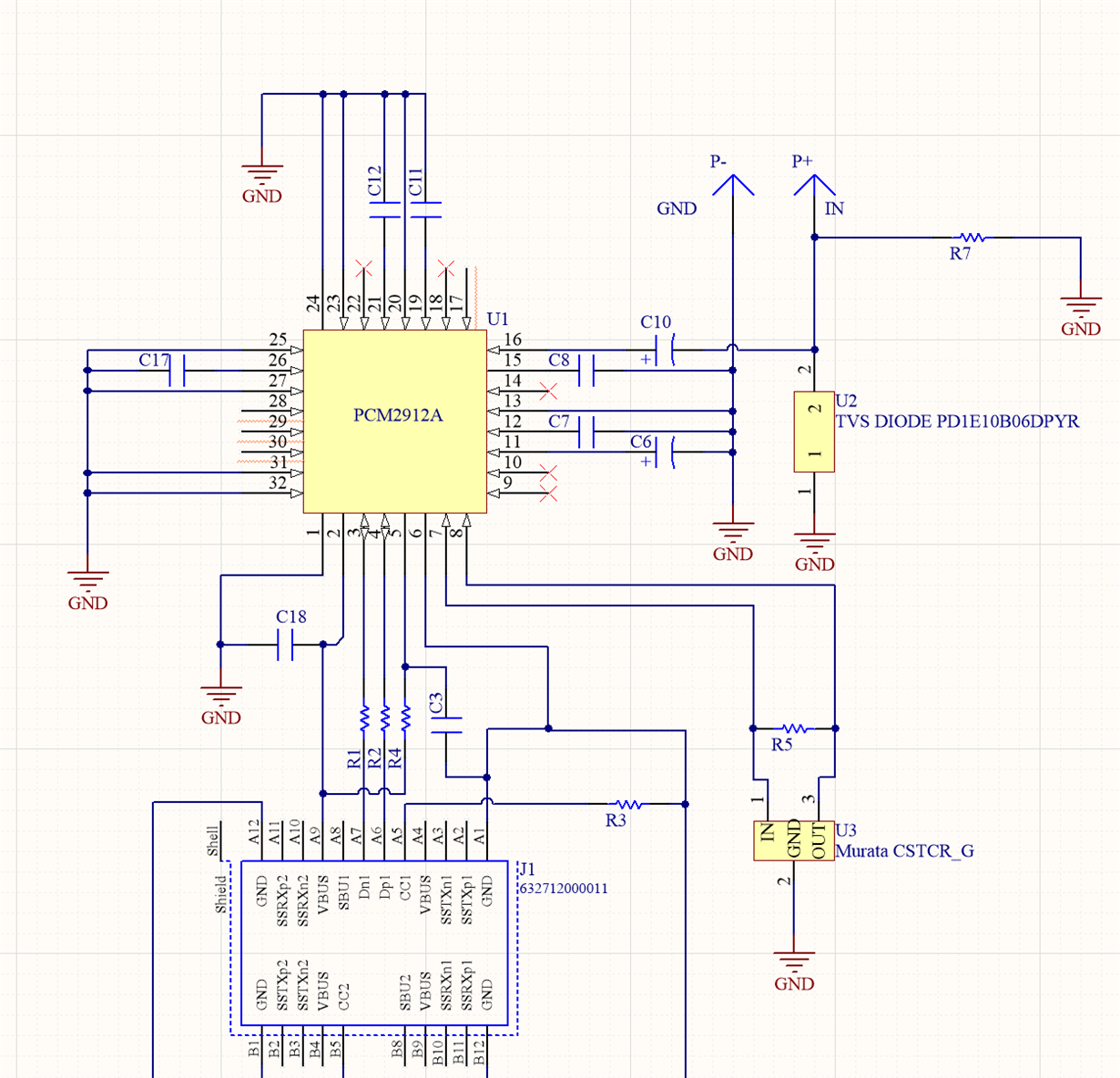Hello, and thank you in advance for your assistance! I am writing to request a schematic design review for my application circuit utilizing the TI PCM2912A. The intended use case is to interface an electric guitar with a PC workstation via USB. The overall design has been copied from the DEM-PCM2912A EVM Schematic with some noted modifications which I would like feedback on:
- The output stage has been removed and replaced with the pin configuration described elsewhere in this forum. Pins 9,10,22,18 are floating; 21,19 coupled to GND via uF; 20 tied to GND
- A TVS diode (TI PD1E10B06DPYR) is included on the input stage to reduce risk of harmful transients when handling the plug.
- This circuit uses a ceramic resonator (Murata CSTCR6M00G55-R0, with built in load caps) instead of a crystal with the intention of saving physical space on the board. I understand this may produce an undesirable noise level and am curious on any experience with this kind of part here.
- This design uses a USB Type-C plug instead of Type-A, with CC1 and CC2 tied to GND indicating USB2.0 mode.
- An input resistor (R7, 1Meg) is included to increase input impedance for the guitar instrument input.
- PLAY and REC pins tied to GND (unused).
Do these design features appear correct and reasonable for the intended use case of maximizing SNR for the guitar input.
Also, could you provide guidance on the proper configuration of the pins MUTE, nSSPND, MAMP, TEST0, TEST1?
Best


